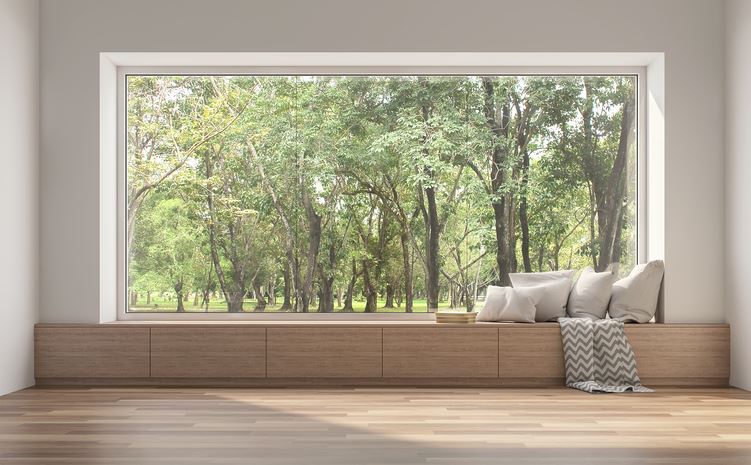One of the best things about owning your own home is the freedom to express yourself and decorate according to your own tastes. Our homes are an extension of ourselves, where we spend much of our time and decompress from our day. It is the space in which we watch our children grow or care for our pets, where we share meals, celebrate milestones and rest.
With the ‘work from home’ trend in full swing, our homes are also becoming our workplace. Working away from the office used to be a luxury for the few but it has become commonplace for many in 2022. Without the stimulation of a commute or the comradery of an office, it is important to ensure our homes are uplifting and restorative spaces that also foster productivity. The classic communal office is traditionally lacking in vibrancy and vitality with little opportunity for its inhabitants to influence the look and feel of the space. You do however have the opportunity to take charge and transform your home office and living areas into enriched spaces abundant in natural light, plants, colourful art and other sensory delights. One way we can do this is through biophilic design.
Biophilic design is a concept that encourages us to connect with nature within our modern built environment. The growing trend toward wellness and eco-conscious living has bolstered this idea in recent years. With much of the population being encouraged to ‘stay home’ for months on end in recent years, many people have witnessed firsthand the benefits of investing in their personal space. More than just a philosophy biophilic design has demonstrated it can support cognitive function, physical health, and psychological well-being.
Biophilia is a term that means a love of nature and encourages us to slow down and pay attention to our surroundings. An invitation to embrace our affinity with the natural world through natural materials, ample natural light, natural colour schemes, plant life and our connection to the outside world. It is a multi-sensory approach and can enhance how you experience your home.
Transforming your space into a soothing sanctuary is not as complicated (or expensive) as you might think. Here are a few ways to incorporate biophilic design into your home.
Outlook
Simply looking outside your window allows you to connect with and appreciate nature. Keeping clear, unobstructed views to the outdoors is an economical and simple way to experience the natural world. An open window allows you to smell and feel the breeze on your skin, hear birdsong and appreciate surrounding greenery. Bring more of the outdoors into view by replacing heavy curtains with sheer fabrics or with blinds that can be concealed when not in use. Keep sightlines to the windows and doors clear and create comfy nooks to sit and appreciate your outlook. Consider replacing solid external doors with glass to maximise natural light and views to the outside.
If your home doesn’t have a great relationship with the outdoors, an architect may be able to assist by opening up spaces, improving cross-ventilation, adding highlight windows and utilising devices that can exclude unwanted summer sun and include much-needed winter sun (such as operable external venetians). An architect can also assist in designing a space that emphasises horizons and spaciousness celebrating the view outside by creating a seamless transition between main living spaces and the outdoors.

Light
Exposure to sunlight is vital for our wellbeing, playing an important role in our hormones and biological processes (including our circadian rhythm) as well as enhancing our productivity and mood. Watching the spectrum of light as it changes over the day also connects us with the cycles of nature. You only need to watch how your houseplants respond to sufficient natural light to get an idea of how it impacts our own bodies.
Plants
Not everyone is blessed with vast views or scenic seascapes. If you can’t see nature from your home one of the most budget-friendly ways to invigorate a space is to fill it with healthy pot plants. Plants soften interiors making them more inviting as well as acting as humidifiers and air purifiers.
Grouping plants together creates a focal point and gifts you with an oasis of lush greenery. Combine different species for a variety of shapes and colours. You can also display art featuring the natural world such as landscapes, plants and flowers to create your own view.
Natural Materials and Elements
Natural materials will gracefully patina and age over time, echoing the natural world and the cycles of life. Not only are they biodegradable and therefore a more sustainable option, but they also offer a psychological reprieve from the density and harshness of synthetic materials. Handmade ceramics, woven baskets, jute rugs, timber floors and furniture, linen or cotton textiles as well as metals such as copper and brass offer welcoming warmth and soothing softness to your space.
Incorporating nature’s elements into your home such as fresh air from an open window or door, the flicker of a candle, the crackle of an open fire or a trickling water feature can also enhance your biophilic experience.

Shapes and form
Curves are abundant in nature while straight lines are more likely to be human-made, with a sharpness to their edge. Organic shapes and abstract forms welcome our touch, soothe our minds and replicate the natural world. Opt for organic over angular, and rounded over rigid shapes and forms when considering furnishings and finishes. Incorporate a variety of textures to create visual complexity and richness to your space.
Colours
Choosing a neural palette to decorate your home and colours from nature (think earthy tans, browns, and all shades of greens) is believed to have a grounding and calming effect on our nervous system.
“We will never be truly healthy, satisfied, or fulfilled if we live apart and alienated from the environment from which we evolved.” - Stephen R. Kellert
Humans are wired to respond positively to the natural environment and indeed studies have shown that time in nature reduces stress, improves mental health, increases productivity and enhances creativity. A walk in the woods or a soak in the sea is not always an option during our busy day to day lives, so bringing nature into our own homes is the next best thing. Cultivating a positive relationship to the natural environment also invites us to become more conscious custodians and reminds us of the interconnectedness of all life on the planet.

Alison Gallagher is a freelance writer, resourcefulness expert and small business owner. She has been featured in various publications including Stellar Magazine, Australian Health and Fitness Magazine, and Cleo Magazine. Alison is particularly passionate about sharing practical tips on how to live simply, sustainably and seasonally.






